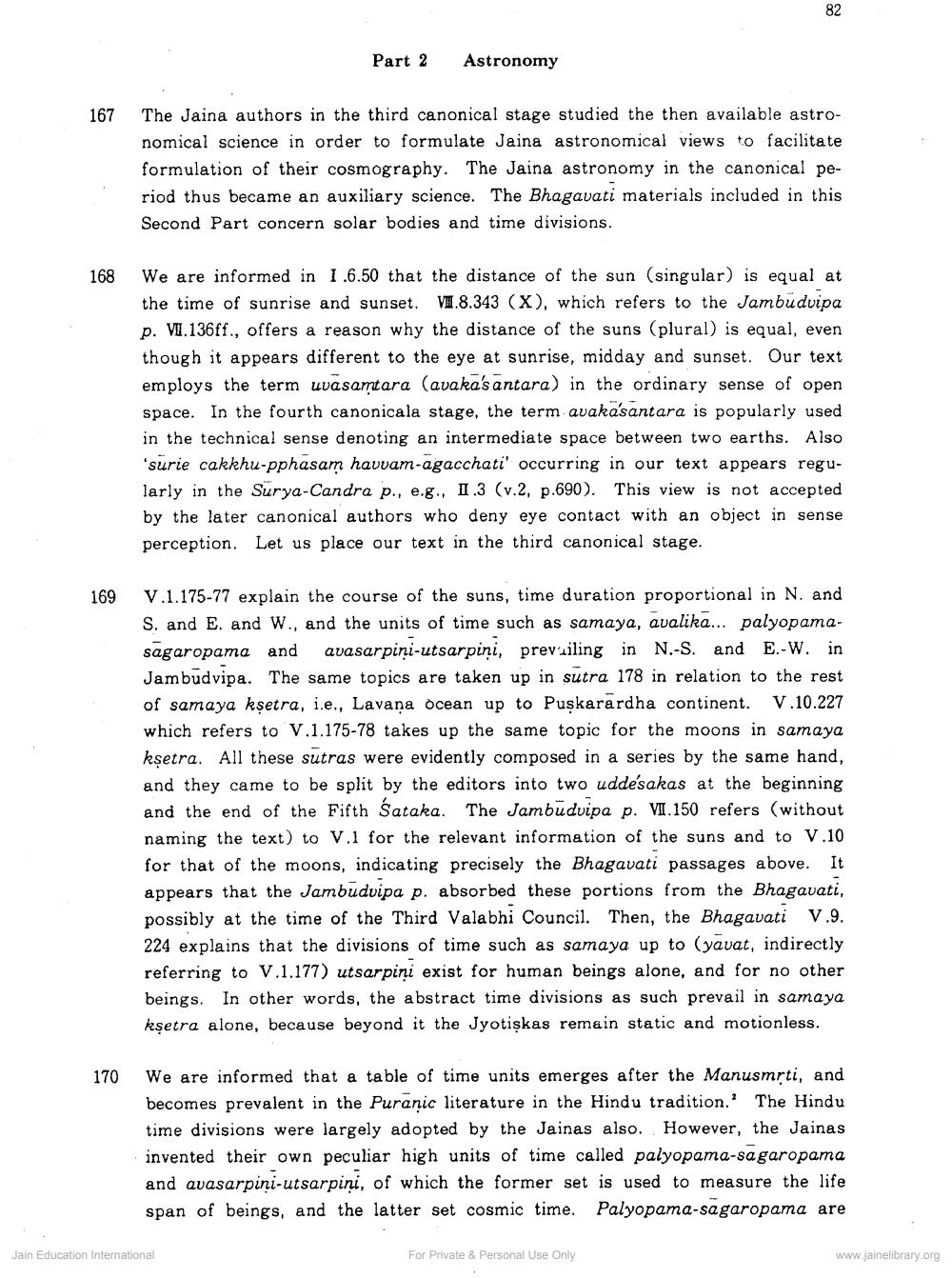________________
Part 2
Astronomy
167
The Jaina authors in the third canonical stage studied the then available astronomical science in order to formulate Jaina astronomical views to facilitate formulation of their cosmography. The Jaina astronomy in the canonical period thus became an auxiliary science. The Bhagavati materials included in this Second Part concern solar bodies and time divisions.
168
We are informed in 1.6.50 that the distance of the sun (singular) is equal at the time of sunrise and sunset. V1.8.343 (X), which refers to the Jambudvipa p. VI.136ff., offers a reason why the distance of the suns (plural) is equal, even though it appears different to the eye at sunrise, midday and sunset. Our text employs the term uvasamtara (avaka's antara) in the ordinary sense of open space. In the fourth canonicala stage, the term avaka'santara is popularly used in the technical sense denoting an intermediate space between two earths. Also 'surie cakkhu-pphasam havvam-agacchati' occurring in our text appears regularly in the Surya-Candra p., e.g., 1.3 (v.2, p.690). This view is not accepted by the later canonical authors who deny eye contact with an object in sense perception. Let us place our text in the third canonical stage.
169
V.1.175-77 explain the course of the suns, time duration proportional in N. and S. and E. and W., and the units of time such as samaya, avalika... palyopamasagaropama and avasarpini-utsarpini, prevailing in N.-S. and E.-W. in Jambudvipa. The same topics are taken up in sutra 178 in relation to the rest of samaya kşetra, i.e., Lavana ocean up to Puskarardha continent. V.10.227 which refers to V.1.175-78 takes up the same topic for the moons in samaya kşetra. All these sutras were evidently composed in a series by the same hand, and they came to be split by the editors into two udde'sakas at the beginning and the end of the Fifth Sataka. The Jambudvipa p. VI.150 refers (without naming the text) to V.1 for the relevant information of the suns and to V.10 for that of the moons, indicating precisely the Bhagavati passages above. It appears that the Jambudvipa p. absorbed these portions from the Bhagavati, possibly at the time of the Third Valabhi Council. Then, the Bhagavati V.9. 224 explains that the divisions of time such as samaya up to (yavat, indirectly referring to V.1.177) utsarpini exist for human beings alone, and for no other beings. In other words, the abstract time divisions as such prevail in samaya kşetra alone, because beyond it the Jyotiskas remain static and motionless.
170
We are informed that a table of time units emerges after the Manusmrti, and becomes prevalent in the Puranic literature in the Hindu tradition. The Hindu time divisions were largely adopted by the Jainas also. However, the Jainas invented their own peculiar high units of time called palyopama-sagaropama and avasarpini-utsarpini, of which the former set is used to measure the life span of beings, and the latter set cosmic time. Palyopama-sagaropama are
Jain Education International
For Private & Personal Use Only
www.jainelibrary.org




